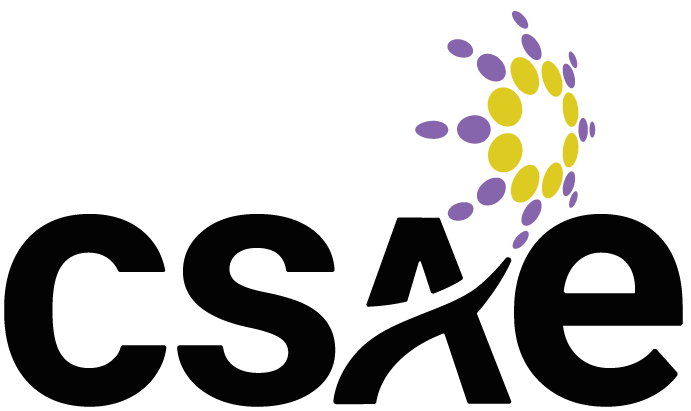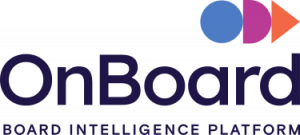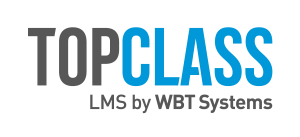Unite Your Board with the Right Technology

Most non-profits and trade associations are digital-savvy when it comes to fundraising, networking and member engagement, but internal software solutions used for everyday operations may not be a priority. For example, if your office is relying on dialing into office computers with a VPN, it may be well past time for an upgrade. The COVID-19 pandemic has elevated the importance of technology for remote work, underscored the need to collaborate effectively and forced associations and non-profits across Canada to re-evaluate technology at all levels.
One of the key ingredients in establishing trust between managers and directors is ensuring the timely flow of information, according to Larry Tapp, the dean of the Richard Ivey School of Business1. Having the right solutions in place can enable trust by giving directors what they need when they need it. This viewpoint is also highlighted in an article from the Harvard Law School Forum on Corporate Governance, “Technology and the Boardroom: A CIO’s Guide to Engaging the Board”; where collaboration and cohesiveness are key2. While both are addressing technology implementation at for-profit companies, the basic standards remain the same.
Now, more than ever, an association or non-profit requires technology solutions that can enable the board, management and employees to work together as a flexible and cohesive team. As with everything in association and non-profit management, the collective will to upgrade is there, but where can your organization find the money – particularly in a time when most non-profits have interrupted and vastly reduced cash flow? It starts with establishing a committee for evaluating the technology that is in place.
Part 1: Understand where your needs are and if some existing solutions can be removed
Through establishing a tech committee and evaluating their needs, Tech Networks of Boston found that multiple software solutions were in use for operations that were slowing down their organization’s work3. They suggest that representatives from each department should be on the tech committee, as well as a tech-savvy board member in order to get leadership buy-in. Once the committee is established, software and hardware inventories can be made, staff can weigh in on where they think more upgrades or training are needed, and the board can be in on the decision-making process.
The board itself can also use technology to ensure that its activities are streamlined and cohesive. A non-profit board usually consists of busy community leaders who do not have time to read multiple iterations of a board book to see changes – they want one document that is ready for review prior to a board meeting.
Putting together materials for board meetings regularly consumes enormous amounts of staff time, and much of this can be avoided by investing in board portal solutions which allow for materials to be changed, reviewed and annotated quickly and easily. The same solutions also make communications more secure by keeping board communications within the solution rather than relying on emails.
Part 2: How to find the money
Not-for-profits: Techsoup & Government Grants
If your association has non-profit status, you can take advantage of multiple private and government programs to subsidize your technology spend. Techsoup Canada is one such program4, which offers donated and discounted software from multiple popular vendors for a low administrative fee.
In addition, with the COVID-19 pandemic, there are multiple levels of extra government support5, some of which provide funding for technology upgrades (these tend to be at the regional6 rather than the federal level, such as some of the programs from FedNor).
What if your association is not a non-profit?
If your association is a trade association or similar organization which does not operate as a non-profit, it usually relies on conferences, membership dues, and sponsorships for funding. Since the pandemic began, most of these funding sources have dried up.
Traditionally, there is very little in the way of government or other support for trade associations, unless they are actively engaged in export activities7 – and even those do not cover technology upgrade costs for the most part. This means that trade associations usually operate on even more of a shoestring budget than a non-profit when it comes to the technology they use, with a few small exceptions for those in the tech sector or those lucky enough to have deep-pocketed corporate members and sponsors.
This makes it even more important to establish a technology committee to see where money can be saved internally on software and other technology solutions, particularly since these can be responsible for many ongoing costs in the operations budget.
Communication is the key to building a solid relationship between management and the board, and in 2021 that means having the right technology tools in place to foster that communication. When the board can easily access reports, files and the other information they need to do their job, trust is built and governance of the organization is better served.
During the economic recovery from the pandemic, it will be more important for directors and management to see what is happening within the organization – particularly from a financial perspective – in order to make nimble decisions.
Technology will allow them to do that, but only if the right technology is in place.
References
1. Building Trust Between Managers and Directors, Larry Tapp. Ivey Business Journal; September/October 2002 edition
2. Technology and the Boardroom: A CIO’s Guide to Engaging the Board, Khalid Kark, Tonie Leatherberry and Debbie McCormack, Deloitte LLP. Harvard Law School Forum on Corporate Governance, 2019.
3. How a Tech Committee can Help Your Nonprofit, Tech Networks of Boston.
4. Introduction to the Technology Donations Program, Techsoup Canada.
5. Knowledge and Resources for Charities and Nonprofit Organizations During COVID-19, Imagine Canada.
6. Federal Government Covid-19 Measures – Implications for Sector Organizations, Imagine Canada. Last updated January 11, 2021.
7. CanExport Associations, Trade Commissioner Service, Government of Canada.
Dilitrust is a sponsor of the Symposium for Chief Staff and Chief Elected Officers in February 2021. If you’re an association or non-profit CEO or executive director, don’t miss this opportunity to build a strong relationship with your board chair and lay the groundwork together for a successful year. Click here for details.





















